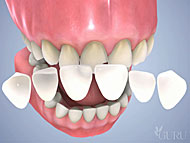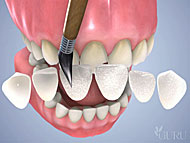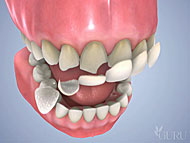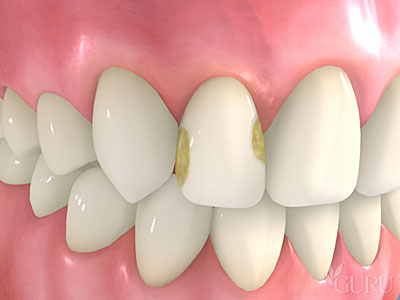Veneers





A veneer refers to both the thin restorative layer that covers the visible area of a tooth’s surface - the part that’s exposed when you’re talking or smiling - and the dental procedure by which it’s applied.
The purpose of veneers is to enhance dental aesthetics and help protect teeth with damaged surfaces from further exposure.
The procedure can be direct or indirect. The direct technique, also called bonding, usually involves placing composite resin on the outside of the tooth using the bonding procedure. The indirect technique involves designing and fabricating the veneers using the most advanced office based digital milling system available (E4D computer aided design and fabrication.) First the color and shape of your teeth are assessed. Any changes in the color and or shape of your teeth are tested with custom made plastic test samples and approved by you prior to making any actual changes. The approved test samples are scanned into the computer and will be the guide for the final porcelain veneers. After the teeth have been prepared to accept the veneers, the prepared teeth are also scanned into the computer using a laser wand. The final veneers can be ready to bond to place in a matter of hours. For multiple veneers, temporary veneers may be placed to allow a few days prior to bonding the final porcelain veneers.
The new porcelain veneers can appear remarkably similar to the original teeth. The advantage of veneers over other restorative procedures is that much less tooth material is removed, and the procedure is generally very comfortable. Veneers may be recommended for teeth that have large fillings or worn tooth structure.

Veneer Decay Tooth